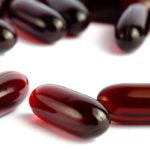The Ultimate Guide to Fitness Gloves
Choosing the right pair of fitness gloves can significantly enhance your workout experience, providing comfort, protection, and improved grip. This guide delves into the crucial factors to consider when selecting gloves for various fitness activities, ensuring you find the perfect fit for your needs.
Types of Fitness Gloves:
The market offers a diverse range of fitness gloves, each designed for specific activities and preferences. Understanding these distinctions is vital for making an informed purchase:
-
Weightlifting Gloves: These gloves prioritize wrist support and protection against calluses and blisters. They typically feature padded palms, reinforced stitching, and wrist straps for stability. Look for durable materials like genuine leather or high-quality synthetics. Consider features like breathable mesh panels to prevent excessive sweating. Weightlifting gloves come in varying lengths, from half-finger to full-finger designs.
-
CrossFit Gloves: Designed for high-intensity workouts involving diverse movements, CrossFit gloves offer a balance of protection and dexterity. They often incorporate features found in both weightlifting and gym gloves, providing wrist support, padded palms, and breathable materials. The emphasis is on versatility and durability to withstand the demands of varied exercises like pull-ups, rope climbs, and weightlifting.
-
Gym Gloves: These gloves generally offer less substantial padding and wrist support compared to weightlifting gloves. They primarily focus on improving grip and preventing calluses, particularly beneficial for activities like bodyweight training, resistance band exercises, and using gym machines. Gym gloves are often lightweight and breathable, prioritizing dexterity over heavy protection.
-
Cycling Gloves: While not strictly “fitness gloves” in the traditional sense, cycling gloves are crucial for cyclists. They offer padding in the palm to absorb vibrations and reduce pressure on the hands during long rides. Features like gel padding, breathable materials, and reinforced stitching are common. Some cycling gloves incorporate touchscreen-compatible fingertips for convenient device use.
Key Features to Consider:
Beyond the type of glove, several critical features dictate performance and comfort:
-
Material: Leather offers superior durability and grip but can be less breathable and more expensive. Synthetics like nylon, polyester, and neoprene provide breathability, flexibility, and affordability. Consider the climate and intensity of your workouts when choosing material.
-
Padding: Padding protects your palms and reduces callus formation. The amount of padding depends on the activity; weightlifting gloves require more padding than gym gloves. Look for strategically placed padding to maximize protection without compromising dexterity.
-
Wrist Support: Wrist straps provide stability and prevent injuries, especially during heavy lifting. Adjustable straps allow for a customized fit. Consider the level of support needed based on your workout routine and any existing wrist conditions.
-
Breathability: Excessive sweating can hinder performance and cause discomfort. Breathability is crucial, especially for high-intensity workouts. Look for gloves with mesh panels or perforated materials to enhance airflow.
-
Grip: A secure grip is paramount for any fitness activity. Gloves with textured palms or strategically placed silicone grips significantly enhance stability and control.
-
Fit: Proper fit is crucial for comfort and performance. Gloves that are too tight restrict blood flow and limit dexterity, while gloves that are too loose offer inadequate support and protection. Check the manufacturer’s sizing chart and consider trying on gloves before purchasing.
-
Finger Length: Full-finger gloves offer the most protection, while half-finger gloves provide better dexterity. Consider the specific needs of your workout routine when choosing finger length.
-
Durability: Look for reinforced stitching, durable materials, and quality construction to ensure your gloves withstand regular use. Investing in higher-quality gloves often translates to longer lifespan.
Choosing Gloves for Specific Activities:
-
Weightlifting: Prioritize wrist support, ample padding, and durable materials like leather or reinforced synthetics. Full-finger or half-finger designs are common.
-
Calisthenics: Gym gloves or lightweight CrossFit gloves are ideal, emphasizing breathability and dexterity. Half-finger designs often provide the best balance.
-
CrossFit: Select versatile gloves with a balance of protection and dexterity. Consider features like reinforced palms and breathable materials. Full-finger or half-finger designs are both suitable.
-
Cycling: Focus on palm padding, breathability, and reinforced stitching. Gel padding is a desirable feature for long rides.
Maintenance and Care:
Proper care extends the lifespan of your fitness gloves. After each workout, allow them to air dry completely to prevent mildew and odor. Avoid machine washing, as this can damage the materials. Spot clean as needed using a mild detergent and a damp cloth. Store your gloves in a cool, dry place to prevent deterioration.
Frequently Asked Questions (FAQs):
-
Do I really need fitness gloves? While not strictly necessary, fitness gloves can enhance your workout by improving grip, protecting your hands, and providing wrist support.
-
How often should I replace my fitness gloves? The lifespan depends on usage and the quality of the gloves. Signs of wear and tear, such as torn stitching or significant padding loss, indicate it’s time for a replacement.
-
Can I wear fitness gloves for all types of workouts? While some gloves are versatile, certain activities might benefit from specific glove types. Weightlifting gloves are not ideal for activities requiring high dexterity.
-
What if my gloves are too tight or too loose? Proper fit is crucial. If your gloves are uncomfortable, consider exchanging them for a different size.
By carefully considering these factors and selecting the right type of fitness gloves for your specific needs and workout routine, you can significantly enhance your training experience, improving comfort, safety, and overall performance.





